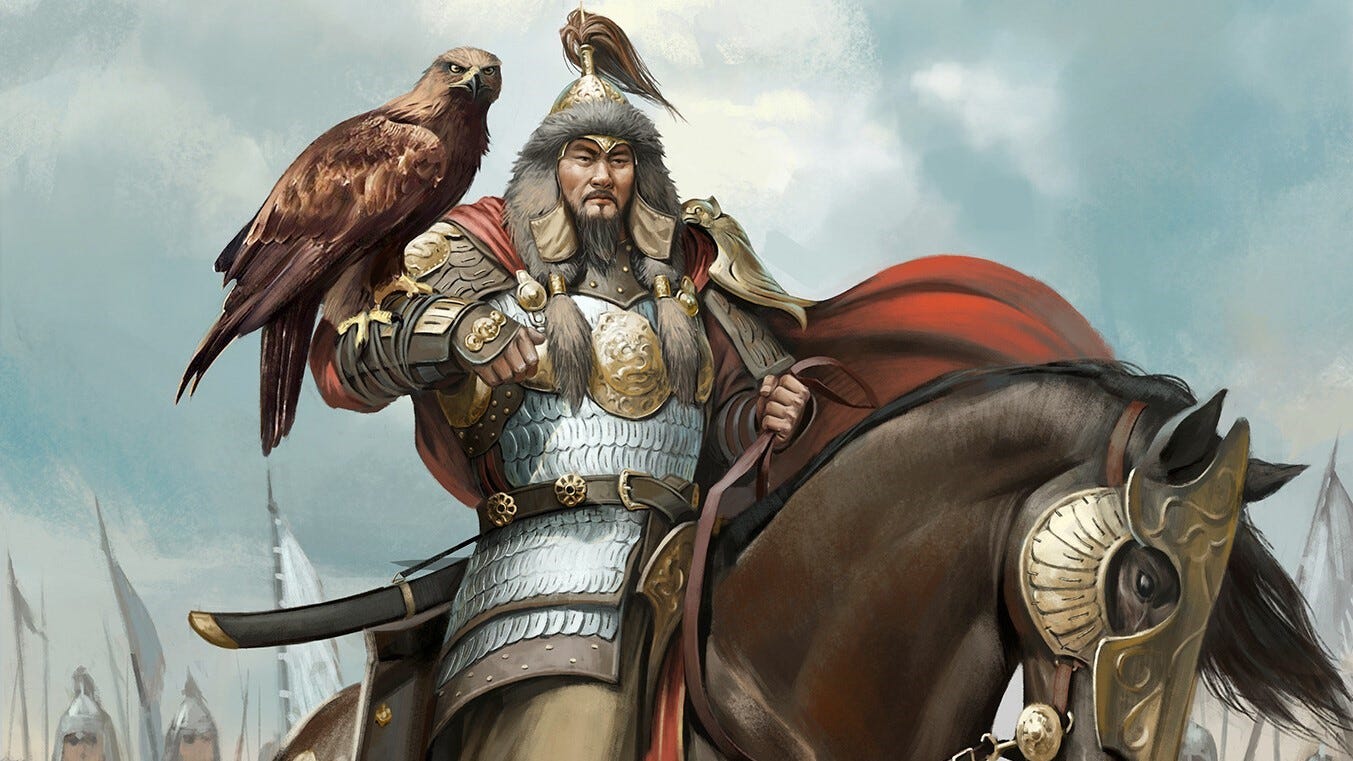Did Genghis Khan Really Kill 1,748,000 People in One Hour?

Under Soviet rule, Mongolians could not even say Genghis Khan's name aloud or visit his homeland.
But since the fall of communism in Mongolia in the 1990s, citizens have reclaimed the legacy of the man the New York Times called "history's original bad boy".
This resurgence in popularity has also caused some people to rethink Genghis Khan. Was he a bloodthirsty heretic or a fair and just statesman? While his reign may not have left behind tangible works of architecture or art, does the Khan's role as a champion of diplomacy, religious tolerance and equal rights for women leave enough of a legacy? And what about the incredible bloody legends surrounding him?
Perhaps no historical figure has as many deaths directly attributed to him as Genghis Khan. A quick glance at the many lists of his supposed deeds reveals a recurring and surprising attribution: Genghis Khan is said to have once killed 1,748,000 people in a single hour!
While Khan unquestionably killed his fair share of people, it is impossible that he or anyone else could have personally taken so many lives in such a short time (at least without dropping a bomb). For Khan to kill so many people in an hour, he would have had to take 29,133 lives per minute.
While this is not possible, there is a fascinating story behind the legend. So why such a strange number? Find out in the next episode.
Facts about Nishapur
1,748,000 is the estimated population of a Persian city called Nishapur in April 1221 [source: Hinson]. This city, now in Iran, was a bustling cultural center in Khan's time. During his campaign to the West after his successful conquest of China, Nishapur was one of the cities his troops sacked.
Genghis Khan (his adopted name means "Universal Ruler" in his native Altaic) was a populist conqueror. He allowed those who surrendered to him to live, usually following a self-imposed rule. His rulers were usually executed, while the common people were usually spared. Anyone else who dared to resist suffered the same fate.
In Nishapur, the Khan's favorite son-in-law, Toquchar, was killed by an arrow shot by a Nishapurian. It is not entirely clear whether the revolt broke out after the Khan's troops had captured the city, or whether this fateful event took place during the initial siege. Either way, it was a death sentence for the city's inhabitants [source: Lange].
When the Khan's daughter heard the news of her husband's death, she was heartbroken and demanded that the last man in Nishapur be killed. Khan's troops, led by his youngest son Tolui, undertook this terrible task. Women, children, babies, even dogs and cats were killed. It is claimed that the Khan's daughter, worried that some of the people were wounded but still alive, demanded that every Nishapurian be beheaded and their skulls piled up in the pyramids. Ten days later the pyramids were completed [source: Gabriel].
Exactly how many people died in Nishapur during the siege is disputed, but it seems that a large number of people were killed and beheaded. However, there is no evidence that Genghis Khan was in the city when the massacre took place.
It is unclear why legends say these events happened in just one hour. And it is equally murky when the 1.75 million deaths were directly attributed to Han. It is even more difficult to understand how this idea made it onto so many lists of astonishing statistics. In any case, a large number of people died at the hands of Genghis Khan or his men. But in a strange, roundabout way, he gave back more than he took. Thanks to his far-flung travels and his fondness for women, a 2003 study found that some 16 million people alive today - or about 0.5 percent of the world's population - are descended from the Khan.
About Genghis Khan
What is Genghis Khan famous for?
Genghis Khan was the founder of the Mongol Empire. He is best known for uniting the Mongol nomadic tribes into a powerful empire that captured the Chinese Jin dynasty. Khan rose to become an influential leader, ruling everywhere between the Pacific Ocean and the Caspian Sea.
How did Genghis Khan die?
Genghis Khan may have died from long-lasting injuries sustained in a fall from his horse the previous year, but there are other hypotheses and stories about his death.
What percentage of the world is related to Genghis Khan?
According to data from studies of the Y chromosome gene by international geneticists, 8 percent of the inhabitants of the Mongol empire are descendants of Genghis Khan. This corresponds to about 0.5 percent of the world's male population, or 16 million men today.
Did Genghis Khan kill 1,748,000 people in one hour?
No, it is humanly impossible for a man to kill 1,748,000 people in one hour, because that would mean 29,133 lives per minute.
What was Genghis Khan's early life like?
Genghis Khan was fearless from an early age. When he was only nine years old, his father was murdered and he was kidnapped, but he escaped by killing his half-brother. Later, as a teenager, he gathered his own followers to form a large army.
Why does Genghis Khan have so many descendants?
Genghis Khan was a notorious empire builder who impregnated many women from the places he conquered during his lifetime.
Did Genghis Khan have any daughters?
Statistically, he may have had daughters, but the only way to find out would be a DNA test on his remains, which is not possible.
Thanks for reading.

































